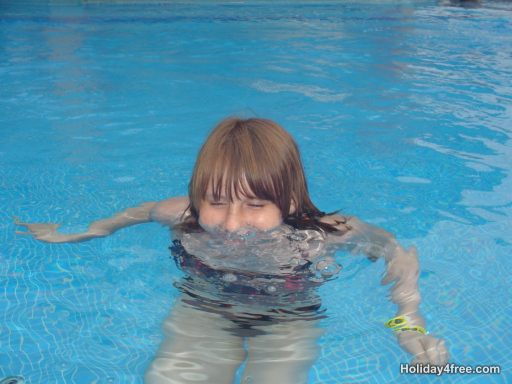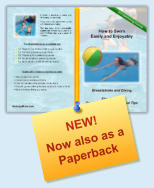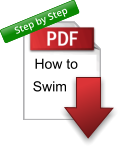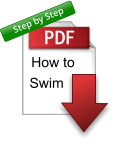








Learn to swim & learn to dive
11. From blowing to diving
Non-swimmers should be introduced to the water gently and kindly. This begins with blowing. When the learner blows out hard, pressure arises in the nasal and oral cavities. The outflowing air prevents water getting into the nose. The blowing should already start under water, before resurfacing. The learner blows the remaining drops away and can now breathe in without coughing. This is important basic preparation for not having to hold one's nose when jumping and diving later on. Even if this breathing exercise may seem funny to adult learners, it makes sense in adult swimming too, in order to start trusting the water and to learn to swim safely later on. An exercise to do at home: Blowing can be practiced at home by simply pouring some clean water into a bowl, washbasin or the bathtub and then blowing hard into it. Children who like playing at blowing bubbles can practice blowing with long, even breaths. Blowing in powerful, explosive puffs can be practiced when blowing out candles. Next step: Learn to swim - 12.1. Preparation for diving
Ad
Ad
Ad
How to Swim 11/20
Learns to Swim
The perfect companion
and guide on learning to swim.

Also available as paperback and PDF
© Holiday4free.com
learns to swim
Ad




Home
Ad



Ad
Ad












